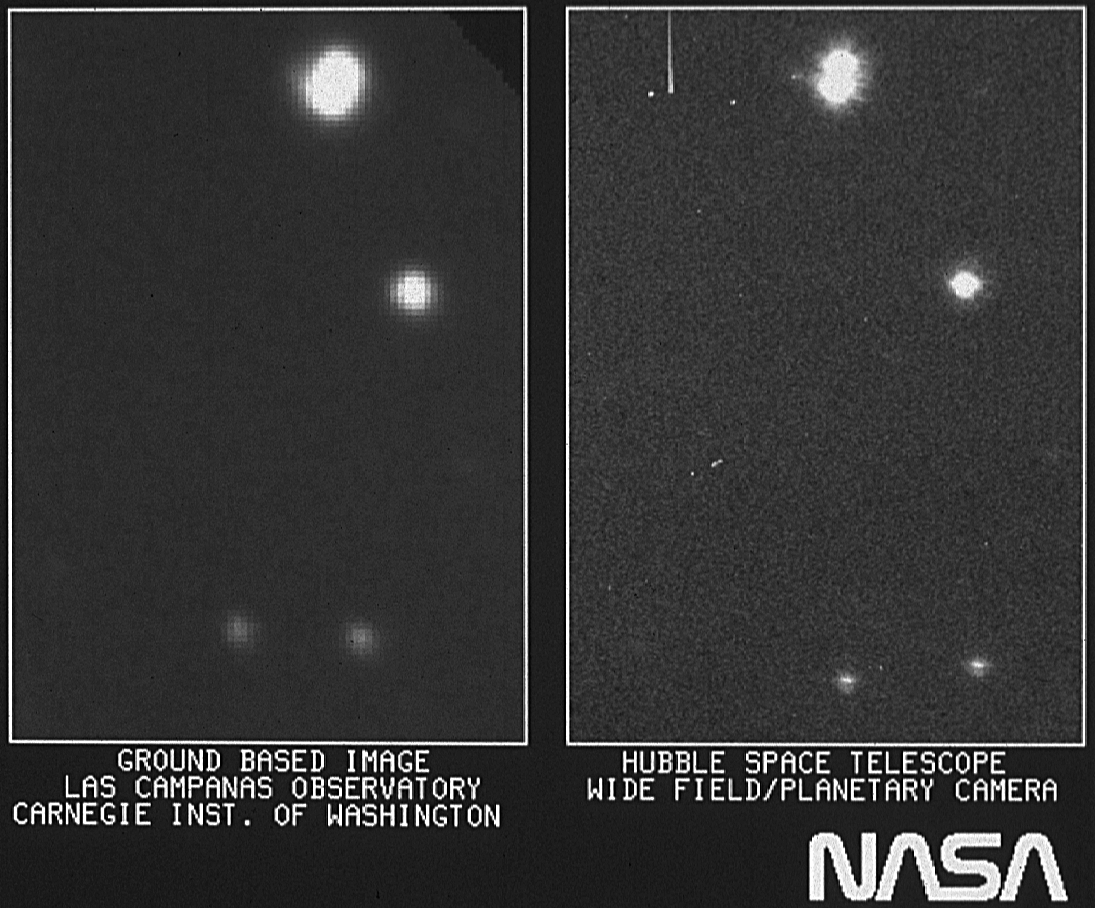30 years of Hubble: Three decades of space wonder began with an underwhelming image that proved extremely important
Hubble may keep functioning until 2030 or 2040 but its successor scheduled for launch in March 2021
Your support helps us to tell the story
From reproductive rights to climate change to Big Tech, The Independent is on the ground when the story is developing. Whether it's investigating the financials of Elon Musk's pro-Trump PAC or producing our latest documentary, 'The A Word', which shines a light on the American women fighting for reproductive rights, we know how important it is to parse out the facts from the messaging.
At such a critical moment in US history, we need reporters on the ground. Your donation allows us to keep sending journalists to speak to both sides of the story.
The Independent is trusted by Americans across the entire political spectrum. And unlike many other quality news outlets, we choose not to lock Americans out of our reporting and analysis with paywalls. We believe quality journalism should be available to everyone, paid for by those who can afford it.
Your support makes all the difference.While the world has become accustomed to the breathtaking images beamed back from the Hubble Space Telescope, the first image it sent, exactly 30 years ago, is less inspiring, but was extremely important.
On 20 May, 1990, Hubble sent back a blurry, black and white image of the binary star HD96755 from its wide field camera. NASA released the image alongside one of the same star, taken from the Las Campanas Observatory in Chile’s Atacama Desert, to compare an image from space with one from the earth.
The difference in resolution was plain to see, but it still appeared unfocussed. The press and the public were underwhelmed. They had been promised a full colour panorama of galaxies showing the workings of the universe. The telescope had cost $2.5bn and was only providing marginally better pictures.
Engineers explained that this was part of the calibration process, known as a first light test, to ensure that the optical systems worked. As they calibrated the telescope the quality of the images would improve.
Behind the 2.4m (7.9 feet) wide primary mirror of the telescope’s optical system were 24 pressure pads to make adjustments and correct for any launch damage. However, no matter what the engineers did, nothing appeared to work, and the promised resolution proved elusive.
Slowly, after a month of trying, NASA admitted defeat and confirmed that the mirror had a manufacturing flaw and could not be adjusted remotely to compensate for the error.
It was not until December 1993, three and a half years later, that the crew of the space shuttle Columbia were able to transport new optical parts to correct the flaw, giving the telescope super sharp resolution and the ability to beam back awe-inspiring photos.
As replacing the mirror in orbit was close to impossible, a new optical component, the Corrective Optics Space Telescope Axial Replacement (COSTAR) system, was added that effectively acted as corrective spectacles.

Four other servicing missions and upgrades were carried out from 1997 onwards, and COSTAR was removed and returned to earth in 2009 once all the original instruments had been replaced with their own corrections built-in.
The telescope may now keep functioning until 2030 or 2040, but nevertheless, its successor, the James Webb Telescope, is scheduled for launch in March 2021.

Join our commenting forum
Join thought-provoking conversations, follow other Independent readers and see their replies
Comments